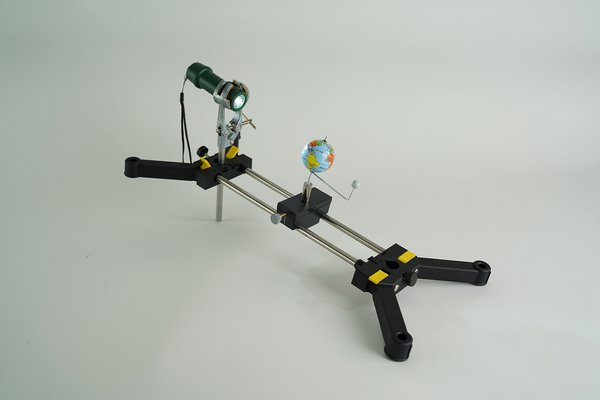
Technical data The seasonsArticle no: P9600400  Principle The Earth's axis is perpendicular to the Earth's orbit, but slightly tilted (oblique). Since the axis is inclined, not all areas of the earth are "supplied" with the same amount of light and heat from the sun at any given time. Because the earth is spherical, the sun's radiation is not evenly distributed over the earth. This leads to different day and night lengths and temperatures over the course of a year, the formation of the seasons. In this student experiment, students build a Sun-Earth model using a lamp as the Sun. They irradiate the Earth model from different positions. In the process, the students observe how the light rays strike certain areas of the Earth. Based on the experimental observation, the positions of the Earth and the Moon in the model are assigned to a season. Scope of delivery
| ||||||||||||||||||
Robert-Bosch-Breite 10 – 37079 Göttingen – Germany
www.phywe.com

